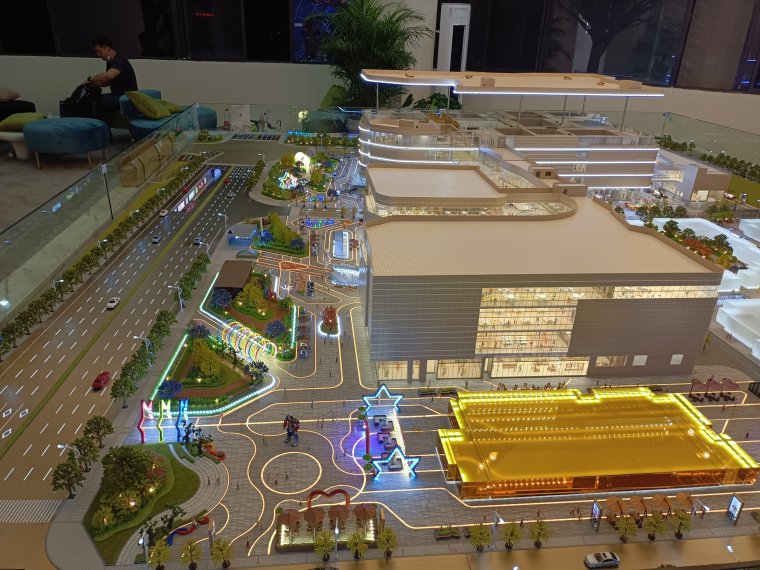- This topic is empty.
-
AuthorPosts
-
2025-04-25 at 4:49 pm #62348
Urbanization has placed immense pressure on transportation infrastructure worldwide. As cities grow, traffic congestion becomes a daily struggle for millions. Traditional traffic management strategies — such as traffic signals, road expansions, and tolling — are often reactive and limited in scope. In the search for more predictive and holistic solutions, a lesser-known yet powerful concept has emerged from the realm of complex systems and physics: the Traffic Sand Model.
This article explores how the Traffic Sand Model can be used to optimize traffic management strategies, offering an innovative framework that blends scientific insight with real-world application.
Understanding the Traffic Sand Model
What is the Sandpile Model?
The Sandpile Model, originally introduced in physics to study self-organized criticality (SOC), describes how simple rules in complex systems can lead to large-scale events. Imagine slowly adding grains of sand to a pile. At first, the sand builds up steadily. But eventually, a single grain can trigger an avalanche, redistributing the structure dramatically. The system naturally evolves to a “critical” state where even minor inputs can cause cascading effects.

Adapting the Sandpile Model to Traffic Systems
TheTraffic Sand Model applies these principles to vehicular movement and urban traffic. Here:
Vehicles are the grains of sand
Roads represent the system surface
Congestion is the result of an "avalanche"
This analogy allows traffic engineers and urban planners to study not only how traffic jams form, but also how small interventions can trigger or prevent large-scale disruptions.
Why Traditional Models Fall Short
Conventional traffic management systems often rely on macroscopic indicators like flow rate, average speed, and volume-to-capacity ratios. These models are helpful but fail to:
Predict critical tipping points (e.g., sudden jams)
Understand chain-reaction congestion
Incorporate driver behavior and localized chaos
In contrast, the Traffic Sand Model provides a microscopic perspective, allowing for the simulation of chain effects and emergent patterns in a decentralized system.
Key Components of a Traffic Sand Model
To effectively use the Traffic Sand Model for optimizing traffic management, certain components must be defined:
1. Grid-Based Representation
Urban road networks are simplified into grid cells or nodes, with each representing an intersection or road segment.
2. Vehicle Density Thresholds
Each node has a maximum vehicle capacity. When this is exceeded — similar to a sandpile becoming unstable — the "excess" traffic spills over to neighboring cells.
3. Avalanche Dynamics
Traffic "avalanches" occur when one congested node triggers others. These cascades can be mapped to understand vulnerabilities and high-risk zones.
4. Feedback Loops
The model includes feedback mechanisms where traffic information (such as congestion levels) influences driver decision-making, much like in real-life conditions.

How the Traffic Sand Model Optimizes Management Strategies
A. Predicting Critical Congestion Points
Using the Traffic Sand Model, urban planners can simulate how a minor disruption (e.g., a lane closure or sudden vehicle influx) might cascade into a city-wide jam. This allows them to identify critical nodes where congestion is most likely to start — and reinforce infrastructure or surveillance in those areas.
Example:
In a simulated model of Manhattan, researchers found that certain intersections, although not the busiest, acted as bottlenecks under stress. Reinforcing these with adaptive signals significantly reduced gridlock.
B. Designing Smart Signal Systems
By modeling how traffic builds up and spills over, cities can design adaptive traffic lights that respond to real-time changes in flow, rather than static timing. These systems can delay or accelerate green signals based on proximity to a predicted avalanche point.
Benefit:
Avoiding unnecessary red lights in adjacent roads can reduce the domino effect of congestion, smoothing flow and reducing emissions.
C. Dynamic Rerouting and Load Distribution
With Traffic Sand Model insights, real-time traffic navigation systems (like those used in GPS apps) can be trained to distribute load dynamically, guiding vehicles away from nodes nearing capacity.
Strategy Example:
If a major road is nearing its threshold, the system can divert traffic preemptively to alternative routes, preventing overload and potential cascade failures.
D. Urban Planning and Infrastructure Investment
The model can simulate long-term scenarios, helping city planners evaluate:
Where to build new roads
Which intersections need flyovers or tunnels
How new developments might affect existing traffic dynamics
Result:
Infrastructure investment is based on dynamic behavior analysis, not just static traffic counts.
Real-World Applications and Case Studies
1. Barcelona’s Superblock Initiative
Although not explicitly based on the Sand Mod
el, Barcelona's approach to limiting vehicle access in select neighborhoods mimics sandpile principles — reducing pressure on key nodes while distributing load to peripheral zones.
2. Singapore’s Traffic Management
Singapore uses real-time data and predictive models (including principles akin to the Traffic Sand Model) to preempt congestion through dynamic tolling and adaptive signals.
3. MIT Urban Mobility Lab Simulations
Research teams at MIT have explored self-organized criticality in urban traffic systems, using sand model analogies to develop early warning indicators for urban congestion.

Conclusion
The Traffic Sand Model offers a fresh lens through which to view the challenges of urban mobility. By focusing on self-organizing principles, cascade effects, and decentralized behavior, it helps planners and engineers anticipate and mitigate congestion before it occurs — a crucial advancement in our increasingly urbanized world.
From dynamic signal systems to long-term infrastructure planning, this model is not just a theoretical exercise — it's a practical tool for building smarter, more responsive cities. As urban complexity grows, embracing such innovative models may be the key to keeping our cities moving.
Sichuan Aolin Model Co., Ltd.was established in 2006. lt specializes in the design and production of high-end display sandtable models. lt wins the choice of customers with independent innovation, quality and perfect service. lt's products cover residential realestate, commercial real estate, tourism real estate, urban planning, government enterprise exhibition halls and other high-end displayneeds, through 17 years of continuous efforts, Aolin lodel has become a representative enter-prise of high-end model production.
If you want to know more about our products, welcome to contact us.
E-mail: yana@scsq-tech.cn
http://www.shengqiantech.com
Sichuan Shengqian Technology Co., Ltd. -
AuthorPosts
- You must be logged in to reply to this topic.